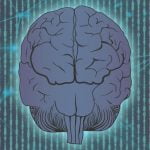Addiction Solutions: What Is a Methadone Maintenance Program?
The current epidemic of opiate and opioid addiction is tragic and destructive, controlling the lives of many. Escaping the hold of this addiction is often difficult or impossible to do alone. A methadone maintenance program offers hope for recovery so patients can get their lives back.
If you or someone you know is struggling with an addiction to opiates or opioids, methadone treatment may help. So how does methadone work? Read on to learn more about this maintenance approach.
What are Opiates and Opioids?
Opiates and opioids both affect the same receptors in the brain. However, they’re different in origin.
Opiates are naturally occurring compounds derived from the opium poppy. Both codeine and morphine are extracted from this plant.
Opioids bind to the same opiate receptors as opiates, but they’re either synthetic or partially synthetic. Fully synthetic opioids are lab-made chemicals. Semi-synthetic opioids result from the chemical modification of naturally occurring opiates. Hydrocodone, oxycodone, buprenorphine, and illegal heroin are all opioids.
Why are They Prescribed?
The legal forms of these are usually drugs prescribed as painkillers. They’re especially helpful with severe or acute pain, such as discomfort after surgeries or major accidents.
Sometimes these drugs are prescribed for chronic pain. While they offer effective pain relief, they also have the potential to quickly lead to addiction and dependency.
Opioid and Opiate Addiction
Opioids and opiates are highly addictive. The science behind their mechanism of action explains why addiction and dependency occur so quickly with these substances.
Both opioids and opiates bind to opiate receptors in the brain. They easily bind to these receptors because of their similarity in structure to naturally occurring brain chemicals called neurotransmitters.
Neurotransmission
Neurotransmitters are essential to nerve cell communication and when released they stimulate opiate receptors appropriately. This stimulation acts as a signal from one nerve cell to another. This is the way our brains understand and interact with the external environment. Our behaviors and reactions are changed or maintained as a result of this signaling.
Opioid and opiate drugs target the reward system of the brain. This system normally rewards natural beneficial behaviors so that we will be more likely to repeat an action. This is important to survival with activities such as eating, moving, and reproduction. However, overstimulation by drugs gives users an augmented euphoric feeling and encourages the repetition of damaging drug use behavior.
Dopamine, Opiates, and Opioids
Dopamine is a key neurotransmitter in the brain, delivering signals from one neuron to the next for proper brain function. It is present in brain regions that are responsible for regulating emotion, thought processes, motivation, pleasure sensation, and movement.
The binding of opiates and opioids to opiate receptors stimulates a flood of dopamine into the synapse, which is the small space between neurons (nerve cells). This dopamine flood creates a feeling of euphoria in users, especially in those abusing the drug.
These drugs can lead users into a spiral of addiction. Conquering this addiction can be even more challenging because of the physical dependence that quickly develops from opiates and opioids.
Physical Dependence and Addiction
Opioid and opiate addiction is usually a two-headed monster. It can take over a user’s behaviors and motivation, while additionally causing the body to have an actual need for the drug.
Physical Dependence
Physical dependence is marked by, requiring more and more of the opiate or opioid drug to achieve previous results.
This dependency is formed as the brain adapts to the drug and develops a tolerance for it. This tolerance requires the user to increase the amounts of the drug that is used in order to feel the same effects and prevent withdrawal symptoms.
Withdrawal
Withdrawal is an uncomfortable and often painful set of symptoms experienced by a user when these drugs are no longer used. Symptoms can include:
- Anxiety and irritability
- Muscle aching and cramping
- Watery eyes and runny nose
- Excessive sweating
- Abdominal cramping and diarrhea
- Nausea and vomiting
- Pupils that remain dilated
- Unpleasant chills and goosebumps
Symptoms of withdrawal can often be avoided or reduced by tapering the dose until complete cessation can be achieved. This allows time for the body to adjust and recover.
In addition to tapering doses, other drugs can be prescribed to take the place of the drug that is being abused. In this pharmaceutical approach, prescriptions are carefully controlled and monitored for the patient’s well-being. One example of such treatment is methadone maintenance.
Addiction
Addiction is used to describe the point where users no longer take the drug to feel its effects. Rather, the drug is used to feel normal and avoid withdrawal symptoms.
Addiction affects the user’s ability to exercise self-control and make appropriate decisions. This is why those abusing drugs will so often continue to do so in spite of major life consequences.
Addiction is characterized by strong drug cravings, failure to meet obligations due to drug use as a priority, compulsive use of the drug, and a lack of self-control. Getting sober and overcoming substance abuse addiction is often difficult.
What is Methadone?
Methadone is an opioid that is prescribed for pain relief and for the treatment of opioid and opiate addiction. Its effects are similar to those of morphine. When used properly, it is an effective, safe way for those struggling with addiction to recover and regain control of their lives.
How Does Methadone Work?
Methadone stimulates the same opiate receptors as problematic drugs. It reduces the intensity of uncomfortable opiate/opioid withdrawal symptoms. It also inhibits the euphoric effects of certain drugs, making them less able to reinforce undesirable behavior patterns.
What is a Methadone Maintenance Program?
In a methadone maintenance program, patients are given a long-term prescription of methadone. This allows for brain chemistry to change gradually so that withdrawal symptoms and cravings are not overwhelming.
Because the brain is given time to recover and adjust, the success rate of methadone treatment programs has a much higher success rate and greater effectiveness than abrupt detox approaches. Most clinics administering treatment also offer to counsel for extra support.
Instead of spending time, money, and energy on obtaining harmful drugs, methadone maintenance allows patients to receive controlled, legal, dependable doses.
Methadone Maintenance Program Success
Facing addiction is a tremendously difficult feat. This is especially true for opiate and opioid addiction. Methadone maintenance treatment offers hope to those in the grips of addiction so that they can move forward and reclaim their lives. Get more information or help to locate a methadone clinic near you at (855) 976-2092.
Sources
Pain medications – narcotics. Retrieved from https://medlineplus.gov/ency/article/007489.htm
The Neurobiology of Drug Addiction. Retrieved from https://www.drugabuse.gov/publications/teaching-packets/neurobiology-drug-addiction/section-iii-action-heroin-morphine/4-opiates-binding-to-opiate-rece
Opioids: cellular mechanisms of tolerance and physical dependence. Retrieved from https://www.ncbi.nlm.nih.gov/pubmed/15661627




Leave a Reply
Want to join the discussion?Feel free to contribute!